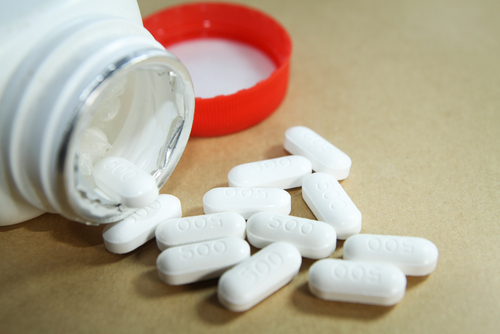Treatment with Tofacitinib Helps Relieve Arthritis and Rash Symptoms in Lupus Patients, Study Shows

Tofacitinib tablets, a medicine approved to treat rheumatoid and psoriatic arthritis, may work for lessening signs and symptoms of arthritis and skin rash in people with systemic lupus erythematosus (SLE), a small study has found.
These findings were reported in the letter “Successful treatment of arthritis and rash with tofacitinib in systemic lupus erythematosus: the experience from a single centre” that was published in the journal Annals of Rheumatic Diseases.
Tofacitinib is marketed by Pfizer with the brand name Xeljanz for treating rheumatoid and psoriatic arthritis in adults who have failed treatment with methotrexate or other disease-modifying anti-rheumatic drugs (DMARDs). The medicine also has been approved to help manage inflammation in adults with ulcerative colitis, another chronic inflammatory condition.
It blocks the activity of certain janus kinases (JAK) enzymes, which are critical for the activity of the immune system. By targeting JAKs, tofacitinib inhibits the activity of several signaling molecules, including interferons and interleukins known to have a role in SLE development and progression.
Clinical data collected from rheumatoid arthritis patients indicates that tofacitinib can act quickly to reduce inflammation, as corticosteroids do, but without the side effects of steroids.
Tofacitinib has been used off-label to treat SLE in some patients, but there is still very little data about the effectiveness and safety of this treatment for lupus.
That’s why a group of researchers at the Peking Union Medical College Hospital in China evaluated tofacitinib’s effectiveness in a group of 10 lupus patients seen at the center. Nine women and one man received 5 mg of tofacitinib two times a day, and were followed by the team for at least four weeks and up to one year.
At each follow-up visit, patients were monitored for disease activity with laboratory tests, such as measurement of anti-dsDNA antibodies and complement C3 levels, and by using scoring systems commonly used in clinics — SLE Disease Activity Index-2000 (SLEDAI-2K) and physician’s global assessment (PGA).
Within one year, tofacitinib yielded a quick resolution of arthritis in all four patients who had such symptoms, and promoted significant relief in skin rash in six of nine participants. All those patients who experienced improvements achieved clinical remission of arthritis or skin rash.
Tofacitinib’s effectiveness for rash, however, was more uncertain. In two patients, the medicine improved symptoms only partially or not at all. And another patient even experienced a flare during the follow-up period.
Despite the rapid benefit seen for disease activity, SLE blood markers remained unchanged during the study. This agrees with prior tests reported for a different JAK inhibitor, baricitinib (sold in the U.S as Olumiant), in lupus patients and animal models.
Two patients experienced treatment-related adverse events. One had herpes varicella zoster (shingles) and the other had alopecia (spot baldness). Both continued on tofacitinib, but their dosage was tapered and they ended up achieving disease remission.
Based on these findings the team believes that “tofacitinib can rapidly improve the symptoms and signs of arthritis and partially improve skin rash in patients with SLE, sparing steroid to reach [clinical remission].”
In view of the small number of patients studied and the variable periods of follow-up for each of them, researchers stress that more studies are needed to confirm tofacitinib’s effectiveness and define its specific indication in patients with SLE.






